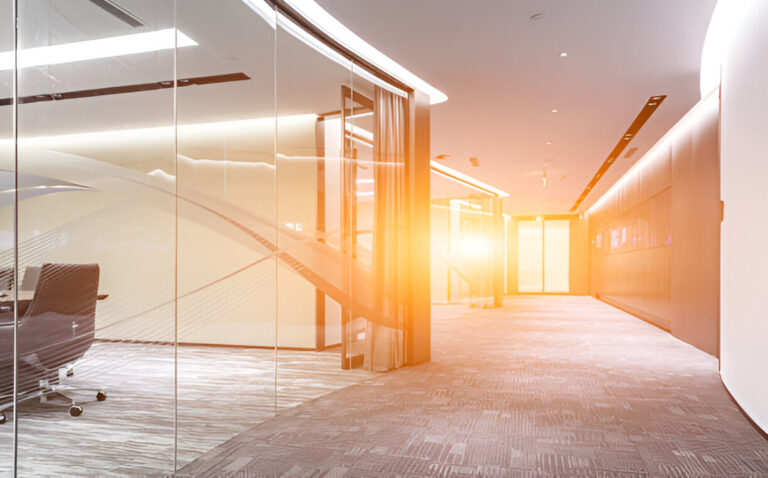Key Takeaways
- Custom glass installations can transform commercial spaces by enhancing aesthetic appeal and functionality.
- The integration of glass in commercial settings contributes to energy efficiency and promotes natural light.
- Understanding the different types of glass solutions available allows for tailored applications based on specific business needs.
- Safety and durability are crucial considerations when implementing glass installations in commercial environments.
The Transformative Power of Glass
Custom glass installations have redefined the landscape of modern commercial design. With their potential to reshape perceptions and experiences within a space, these installations serve more than just an aesthetic purpose. They actively influence the atmosphere and productivity. The strategic use of glass creates an illusion of expanded space, offering an open and inviting environment that feels spacious and intimate. These qualities of openness and connectivity help distinguish businesses in competitive markets. For insights and services, you can explore more at Kennedyglass.com, where experts delve deeper into the nuances of glass installation possibilities.
Benefits of Natural Light
Natural light stands as one of the most underappreciated elements in workplace design. Its strategic integration into a commercial space can lead to transformational changes, positively influencing mood and productivity. By making the most of natural daylight, employees experience reduced eye strain and enhanced mood, which can be linked to greater job satisfaction. Moreover, embracing daylight in office design isn’t just about aesthetics or mood; it carries tangible financial benefits by cutting down energy costs associated with artificial lighting. A study published by the Harvard Business Review underlines that exposure to natural light can boost employee mental health, well-being, and efficiency.
Custom Glass Types and Applications
Tempered Glass
The robust nature of tempered glass makes it indispensable in commercial setups, especially where safety is a principal concern. Its creation process involves heating glass to high temperatures and then rapidly cooling it, resulting in increased strength. When conventional glass would shatter into hazardous shards, tempered glass breaks into duller, less harmful pieces, making it the preferred choice for areas frequented by people.
Laminated Glass
Laminated glass’s unique design layers a durable interlayer between multiple sheets of glass. This permanence ensures that the glass remains bonded even if broken, providing an invaluable security feature. Perfect for spaces that demand confidentiality and reduced noise pollution, laminated glass doubles as both a safety measure and an acoustic damper. It’s especially effective in spaces requiring privacy, like boardrooms and offices, without aesthetic compromise.
Frosted Glass
For businesses striving to blend confidentiality with style, frosted glass offers the ideal solution. Its etched surface disrupts transparency, allowing diffused light to enter while obscuring detailed vision, thus delivering privacy. This is particularly advantageous in areas needing separation, such as cubicles and meeting areas, serving a dual purpose of elegance and discretion.
Energy Efficiency Through Glass Technology
With environmental consciousness becoming increasingly imperative, applying advanced glass technologies signifies a commitment to sustainability. Low-emissivity (Low-E) glass has emerged as a front-runner in addressing heat transfer, thus playing a critical role in a building’s energy performance. The Department of Energy provides comprehensive resources on energy-efficient windows, emphasizing how they reduce the demand for heating and cooling systems, ultimately lowering utility bills. These coatings reflect interior energy, reducing unwanted thermal exchange between indoor and outdoor environments.
Design Flexibility and Aesthetics
The ability of glass installations to seamlessly integrate with various design themes makes them quintessential for modern commercial spaces. Whether you aim to craft a minimalist vibe or create an innovative futuristic setting, glass offers unmatched versatility that aligns with your stylistic goals. Customization spans from color hues to intricate etchings, allowing a personalized touch while maintaining functionality. This flexibility and cutting-edge design blend enables businesses to reimagine and reinvent spaces, continually adapting to evolving trends.
Considerations for Safety and Durability
Safety considerations in commercial premises necessitate careful planning of glass installations. Impact-resistant options, alongside adherence to regulated building codes, ensure these structural additions remain robust against external pressures. Ensuring glass installations meet safety standards is a regulatory obligation and a commitment to safeguarding patrons and personnel. It reinforces clients’ confidence and trust in a commercial setting, which is crucial for operational success, especially in storefronts or environments subject to extreme weather conditions.
Conclusion: Integrating Vision and Functionality
Custom glass installations epitomize the synergy of aesthetic brilliance and practical advantages. They offer commercial spaces an opportunity to align with modern architectural visions and boost efficiency and appeal. The incorporation of such glass elements requires a thoughtful approach, balancing design with functionality, to create environments that are not only visually compelling but also contribute positively to business operations and client satisfaction.


